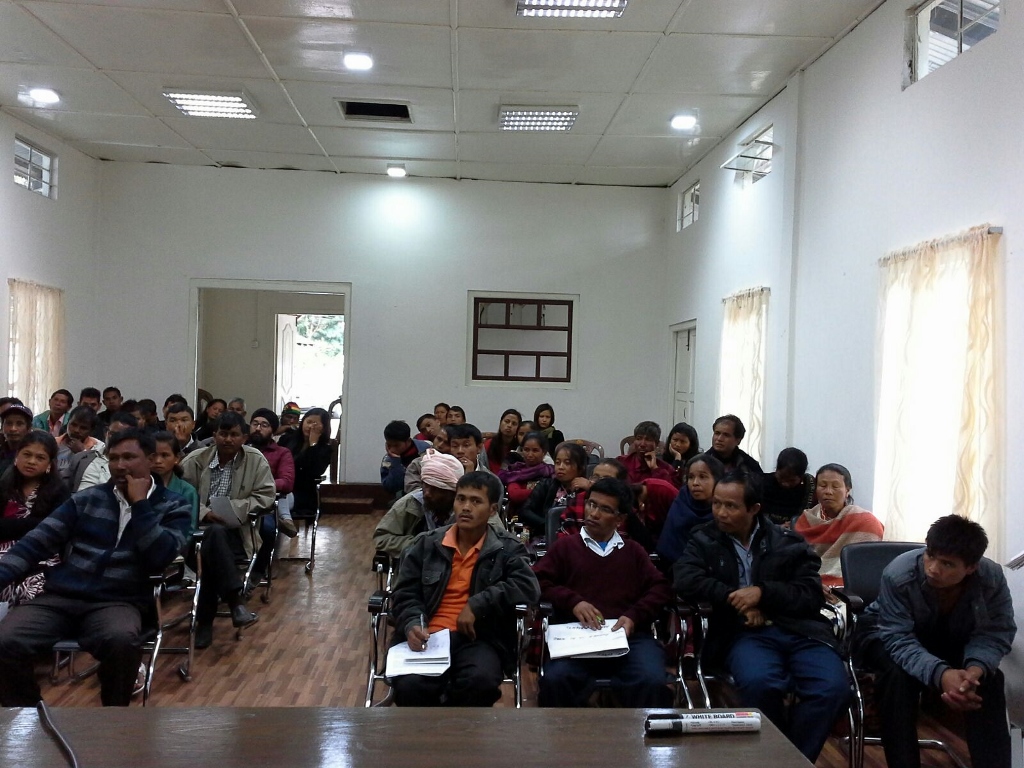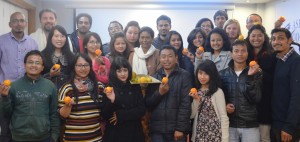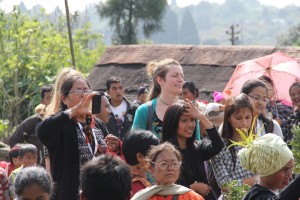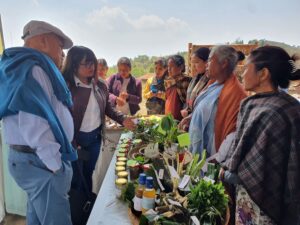
On the 14th of November 2015, a week after the close of the Indigenous Terra Madre (ITM 2015). There were 18 of the 41 host villages of Meghalaya who participated at the ITM 2015. They had gathered together at the MBDA Hall, Shillong to discuss the Shillong Declaration which was an outcome of the discussions that took place during the ITM 2015.
ITM 2015 saw the participation of 58 countries, 140 communities and 640 delegates in all. The event culminated with a food festival at the Mawphlang Sacred Groves that had a footfall of no less than 80,000 people in attendance.
The delegates at the ITM, who had their villages, prepared for the event, found it was a valuable experience for them to be proud of. As agriculture has always been an important aspect of their lives while living in peace and harmony with nature. According to Benerale Ranee of Nongwah, East Khasi Hills, he has held a strong belief to save their seeds and protect their local foods systems. He felt the various stories from the 41 villages around Meghalaya have traveled even further around the world. “The 5 day ITM event has really supported our farmers and encouraged us to strengthen our beliefs by uniting with other indigenous people of the world. We have been able to listen to their experiences which are similar to ours. It has only allowed us to think openly.”
Dr. Carl O. Rangad, ITM 2015 Expeditor, congratulated those present on the success of the event. As they had all gather to gain inputs of the communities for the draft. Mr. Phrang Roy, Chairman of NESFAS, who was advising the communities while reviewing the draft. He mentioned, “Communities must be clear with their objectives when reviewing the document.”
The draft of the Shillong declaration has been put together by the organizers of ITM 2015 including The Indigenous Partnership for Agrobiodiversity and Food Sovereignty, Slow Food International and North East Slow Food and Agrobiodiversity Society.
The summary of the Shillong Draft was focused on issues pertaining to food, agroecology, traditional agricultural practices, and among others issues also. The organizers felt it was necessary that our own farmers had their voices in the document in which their opinions were documented on the draft.
The communities brought out various points such as land issues and land rights of the indigenous peoples while highlighting the need to understand the issues and also looking at better practices of land use. As an example, the people of Lyngngam in West Khasi Hills, have been able to defend their cultivable lands over time.
There were other topics discuss in the Shillong Declaration such as the need for the preservation of fauna, preservation and documentation of medicinal plants. They realized the way to address these issues during the meeting was through local solutions in which emerged a collective dialogue and information sharing.
The draft of the Shillong Declaration has been circulated to the delegates as a usual practice since the first Indigenous Terra Madre. The document is expected to be finalized by December 2015. In which the various delegates who participated at the 2nd ITM 2015 will be reviewing the draft. There were more than 100 indigenous groups who were present and the feedback from the delegates has been so far positive. The delegates strongly appreciated the issues of land use were addressed. In the words of one of the delegates, “Participating in the ITM was really a proud moment for us and our village was really prepared for the event. It was a really valuable experience of the precious moment, to interact with other farmers from around the world.”



